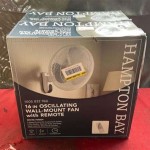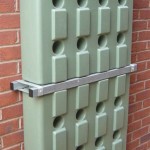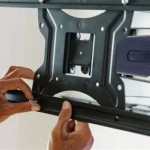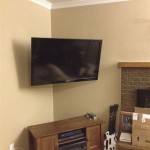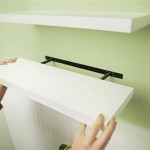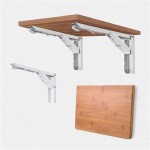Extra Large Wall Mount Mailbox: A Comprehensive Guide
The selection of a mailbox transcends mere functionality; it embodies a statement about property aesthetics and security. For individuals and businesses anticipating substantial mail volume, or those prioritizing enhanced security against theft, an extra large wall mount mailbox presents a viable solution. This article delves into the characteristics, benefits, installation considerations, and maintenance aspects of extra large wall mount mailboxes, providing a comprehensive understanding for potential buyers.
Understanding the Need for Extra Large Wall Mount Mailboxes
The primary impetus for selecting an extra large wall mount mailbox stems from the limitations of standard-sized models. Traditional mailboxes often prove inadequate for receiving larger packages, magazines, catalogs, and the influx of mail associated with online shopping. This inadequacy can lead to several problems, including mail carriers leaving packages exposed on doorsteps, potentially vulnerable to theft or weather damage. Furthermore, businesses frequently require larger mail receptacles to accommodate invoices, contracts, and other business-related correspondence.
Extra large wall mount mailboxes address these issues by providing significantly increased storage capacity. This expanded volume allows for secure and protected reception of larger items, mitigating the risk of mail theft and damage. The larger size also reduces the frequency with which mail needs to be collected, offering added convenience for individuals with busy schedules or those who are frequently away from home.
Key Features and Considerations When Choosing a Mailbox
Selecting the appropriate extra large wall mount mailbox requires careful consideration of several factors. These include material durability, security features, aesthetic appeal, and compliance with postal regulations. Evaluating these aspects ensures that the chosen mailbox meets specific needs and provides long-term reliable service.
Material Durability: The mailbox's construction material directly impacts its longevity and resistance to weather conditions. Common materials include galvanized steel, stainless steel, aluminum, and plastic. Galvanized steel offers excellent strength and rust resistance, making it a popular choice. Stainless steel provides superior corrosion resistance, particularly in coastal environments. Aluminum is lightweight and rustproof, while plastic offers affordability and impact resistance. The choice of material should align with the prevailing climate and expected exposure to the elements.
Security Features: Mail theft is a growing concern, necessitating mailboxes with robust security features. Look for models with locking mechanisms, such as a key lock or combination lock. Reinforced doors and tamper-resistant designs further enhance security. Some mailboxes include a slot for outgoing mail that prevents unauthorized access. Consider the level of security required based on the perceived risk of theft in the area.
Aesthetic Appeal: While functionality remains paramount, the mailbox's appearance contributes to the overall curb appeal of the property. Extra large wall mount mailboxes are available in a variety of styles, colors, and finishes. Choose a model that complements the architectural style of the house or building. Options range from traditional designs with ornate detailing to contemporary styles with clean lines and minimalist aesthetics. The finish should be durable and resistant to fading or chipping.
Compliance with Postal Regulations: Ensure the chosen mailbox complies with the United States Postal Service (USPS) regulations. These regulations specify the acceptable size, placement, and accessibility of mailboxes. Generally, wall mount mailboxes should be positioned with the bottom of the mailbox between 41 and 45 inches from the ground. Clear access to the mailbox must be maintained for mail carriers. Consulting the local post office or reviewing USPS guidelines online ensures compliance and avoids potential delivery issues.
Size and Capacity: The internal dimensions of the mailbox dictate the types and volume of mail it can accommodate. Measure the typical size of packages and envelopes received to determine the appropriate mailbox capacity. Consider future needs, such as potential increases in online shopping or business correspondence. A slightly larger mailbox is preferable to one that is consistently overflowing.
Installation Requirements: Wall mount mailboxes typically require anchoring to a solid surface, such as an exterior wall. Assess the wall material (e.g., brick, siding, stucco) and select appropriate mounting hardware. Verify that the wall can support the weight of the mailbox, especially when filled with mail. Some models include pre-drilled mounting holes for easy installation, while others may require drilling. Consider hiring a professional installer if unfamiliar with basic carpentry or masonry techniques.
Installation of an Extra Large Wall Mount Mailbox
The installation process for an extra large wall mount mailbox involves several key steps, ensuring secure and stable mounting. Proper installation extends the lifespan of the mailbox and prevents potential damage to the surrounding wall.
Gathering Tools and Materials: Before commencing installation, assemble the necessary tools and materials. These typically include a drill, drill bits (appropriate for the wall material), a level, a measuring tape, a pencil, mounting hardware (screws, anchors, washers), and a screwdriver. Refer to the mailbox manufacturer's instructions for specific hardware recommendations.
Marking the Mounting Location: Determine the desired mounting location, ensuring compliance with USPS height regulations. Use a level to mark the position of the mounting holes on the wall. Accurate marking is crucial for a level and secure installation.
Drilling Pilot Holes: Using the appropriate drill bit for the wall material, drill pilot holes at the marked locations. For brick or masonry walls, use a masonry drill bit. For wood siding, use a standard wood drill bit. The pilot holes should be slightly smaller than the diameter of the mounting screws.
Installing Anchors (if necessary): If the wall material is soft or unstable, such as drywall or stucco, install wall anchors into the pilot holes. Anchors provide additional support and prevent the screws from pulling out of the wall. Follow the anchor manufacturer's instructions for proper installation.
Mounting the Mailbox: Align the mailbox with the pilot holes and insert the mounting screws through the mailbox mounting holes and into the pilot holes or anchors. Tighten the screws securely, but avoid over-tightening, which could damage the mailbox or the wall. Use washers under the screw heads to distribute the pressure evenly.
Verifying Stability and Levelness: After mounting the mailbox, verify its stability and levelness. Gently shake the mailbox to ensure it is securely attached to the wall. Use a level to confirm that the mailbox is perfectly horizontal. Adjust the screws as needed to achieve a level and stable installation.
Maintaining an Extra Large Wall Mount Mailbox
Regular maintenance prolongs the lifespan and preserves the appearance of an extra large wall mount mailbox. Simple maintenance tasks can prevent rust, corrosion, and other forms of damage.
Regular Cleaning: Periodically clean the mailbox with a mild soap and water solution. Remove any dirt, debris, or bird droppings. Rinse thoroughly with clean water and dry with a soft cloth. Avoid using abrasive cleaners or scouring pads, which can scratch the surface.
Rust Prevention: For steel mailboxes, apply a rust-inhibiting primer or paint to any areas where the paint has chipped or scratched. This prevents rust from spreading and compromising the structural integrity of the mailbox. Regularly inspect the mailbox for signs of rust and address them promptly.
Lubricating Moving Parts: Periodically lubricate the hinges, locks, and other moving parts with a silicone-based lubricant. This ensures smooth operation and prevents sticking or binding. Avoid using oil-based lubricants, which can attract dirt and grime.
Protecting from the Elements: In harsh climates, consider applying a protective coating to the mailbox to shield it from extreme weather conditions. This is particularly important for mailboxes exposed to salt spray or heavy snow. A UV-resistant coating can prevent fading and discoloration caused by prolonged sun exposure.
Repairing Damage Promptly: Address any damage to the mailbox promptly to prevent further deterioration. Repair or replace damaged hinges, locks, or doors. Patch any holes or cracks in the mailbox body. Delaying repairs can lead to more extensive damage and costly replacements.
By taking these factors into consideration, individuals and businesses can make informed decisions when selecting and maintaining an extra large wall mount mailbox that suits their specific needs and enhances their property.

Mail Boss Metro Wall Mount Locking Mailbox Black

Kahomvis Black Extra Large Galvanized Steel Parcel Mailbox Wall Mounted Lockable Anti Theft Package Delivery Box

Kahomvis Black Extra Large Galvanized Steel Parcel Mailbox Wall Mounted Lockable Anti Theft Package Delivery Box

Extra Large Wall Mount Mailbox With Combination Lock Anti Theft Heavy Duty Locking For Business Suitable Mails Keys

Woodlands Wall Mount Mailbox Black Steel Xl

Architectural Mailboxes Centennial Post Mount Mailbox Rubbed Bronze

Dropship Package Delivery Boxes For Outside Extra Large Mailbox Galvanized Steel Parcel Wall Mounted Lockable Anti Theft Outdoor Porch Curbside Black To Sell At A Lower Doba

Modern Outdoor Waterproof Extra Large Drop Box Wall Mounted Mailbox With 2 Keys

Large Flush Mount Copper Mailbox Wall Solid Hand Crafted Brushed House Number Etsy

Modern Outdoor Waterproof Extra Large Drop Box Wall Mounted Mailbox With 2 Keys

